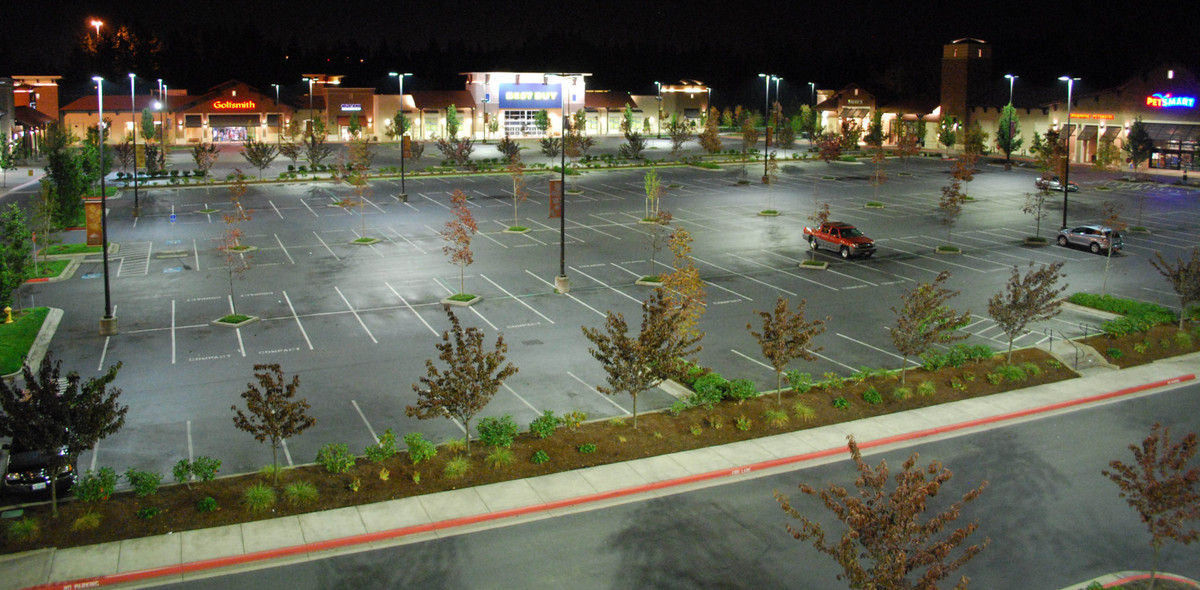Does LED Lighting Provide Less Lumens Than HID Lamps?
By Leah • Sep 05, 2019
Did you know that there are different ways to measure light output? It’s true! While many think that watts are the only form of measurement, this is simply not the case. In fact, the unit of measurement used depends on various factors. In the past, light output was measured in watts as it was helpful to know how much electricity was used per bulb in industrial settings. With the rise in LED lighting, this has changed.
In this guide, we will explore the most effective methods for measuring light output and examine the key differences between HID lamps vs. LED lighting. By understanding these distinctions, you'll be better equipped to choose the right lighting solution for your needs. We'll dive into the efficiency, lumen maintenance, and overall performance of each type, highlighting why LED technology is becoming the preferred choice in various applications.
HID or LED Lights? Understanding the Different Lighting Solutions
Lighting technology has advanced significantly, with LED and HID lamps being two popular options. LED lights are renowned for their energy efficiency, long lifespan, and versatility. LEDs produce light through electroluminescence, offering high-quality illumination with minimal energy consumption, making them ideal for residential, commercial, industrial, and automotive lighting applications.
In contrast, HID lighting generates light by passing an electrical discharge through a gas-filled tube, resulting in bright and intense light. HID lamps, including metal halide and high-pressure sodium varieties, are commonly used in large-scale industrial and outdoor settings due to their high lumen output and ability to cover extensive areas.
Understanding Lumens vs. Watts
When comparing HID vs. LED lights, it's essential to understand the difference between lumens and watts first. Watts measure the amount of electrical power a light bulb consumes. Historically, this was a reliable way to gauge the brightness of incandescent and halogen bulbs because higher wattage generally meant brighter light.
However, with modern lighting technologies like LEDs, wattage is not necessarily a reliable indicator of brightness. This is where lumens come in. Lumens measure the actual amount of visible light emitted by a bulb, making it a more accurate metric for assessing brightness. An LED bulb, for instance, uses significantly fewer watts to produce the same amount of lumens as an HID bulb or a traditional incandescent bulb. This efficiency makes LED lighting much more energy-efficient.
Besides lumens and watts, light output can also be measured using foot-candles, which indicate the intensity of light on a specific surface area. However, lumens remain the preferred measurement for general lighting purposes, especially when comparing the brightness of different types of bulbs, such as HID bulbs vs. LED bulbs.
What Are Lumens per Watt?
Since LEDs are so efficient, we need to use a better system of explaining their light output. Lumens per watt is a good way because it shows how many watts are required to create the amount of light needed. A 400W HID lamp such as a metal halide may emit an average of 34,000 lumens. This means it has a value of 85 lumens per watt (lm/W). Take 34,000 lumens divided by 400 watts to get 85 lumens per watt. This is known as lumen efficacy.Today’s LEDs have an efficiency of between 140 to 180 lm/W, although this is a broad generalization and there are many factors contributing to its efficacy. Still, it is much more energy efficient when compared to HID.Another contributing factor to LED efficiency is the ballast factor. Legacy lighting systems like metal halide and high pressure sodium lamps require a ballast, which is a control for preventing electrical surges when turning on HIDs. LEDs do not require a ballast since they use so much less electricity to turn on and maintain light output. By eliminating the ballast, there is further reduction in wattage demand and therefore additional energy savings.This is why lumen efficacy is only part of the issue. Better yet is to use the term overall luminous efficacy because it takes into account other factors such as heat loss and energy used for the ballast.

So Why Do Some HIDs Give Out More Lumens Than LEDs?
This difficult subject is complicated further by the fact there are different types of light radiation. Lights give off energy on a light spectrum, measured by different wavelengths. The human eye can only see some of these wavelengths, rendering the ones we can't see essentially useless for purpose.HIDs not only have less lumen efficacy, they also are limited in the type of light they can put out, i.e. that which is on the visible human spectrum. LEDs are more efficient with energy, and they also render the light output much better. Not only do they require less lumens (about a third less) than HIDs, they also provide much better quality light. This is referred to as lighting efficiency, or sometimes wall-plug efficiency.
If you purchase an LED bulb that claims to emit fewer lumens than a metal halide lamp, this may be accurate. However, it's important to note that while it emits fewer total lumens, the light it produces is much more effective for the human eye. Some HID lamps may advertise higher lumen output, but they do not deliver the same quality of useful light that LEDs can provide. Furthermore, most LED lighting is directional, meaning more light on target - where you need it. HID lighting is omnidirectional, meaning light output is 360 degrees which results in a lot of wasted light. For these reasons, with a LED light source you typically only need about one third of HID lumen output to achieve better lighting.
If you want to see the lumen efficacy of an LED in action, you can look at the OEO EZ LED 1K ULTRA-P. This lamp is a direct replacement for 1000 W metal halide bulbs, but saves up to 70% at a 145 lm/W efficacy rate. The result is less electricity used and more savings to you.
Embrace the Future: The Benefits of Switching to LED Lights
Switching to LED lights offers numerous benefits, making it clear that the future of lighting is LED. LED lighting is highly energy-efficient, consuming significantly less power than traditional HID and halogen lights. This translates to lower electricity bills and a reduced carbon footprint, contributing to environmental sustainability.
LEDs also have a much longer lifespan, often lasting tens of thousands of hours, which means less frequent replacements and lower maintenance costs. Additionally, LED lights provide superior light quality with better color rendering, enhancing visibility and safety in various settings, from industrial warehouses to commercial spaces and even automotive headlights.
For industrial or commercial lighting solutions, choosing OEO is a smart decision. OEO specializes in providing high-quality, energy-efficient LED lighting solutions tailored to meet the specific needs of your business. By partnering with us, you gain access to cutting-edge LED technology, expert support, and reliable products designed to enhance your lighting infrastructure while maximizing savings and sustainability.
Whether you're upgrading an entire facility or seeking targeted lighting improvements, OEO provides the expertise and innovative solutions to help you achieve your goals. Shop our selection of LED Bulbs, LED strip light fixtures, outdoor LED lighting solutions, and more right on our website today.
